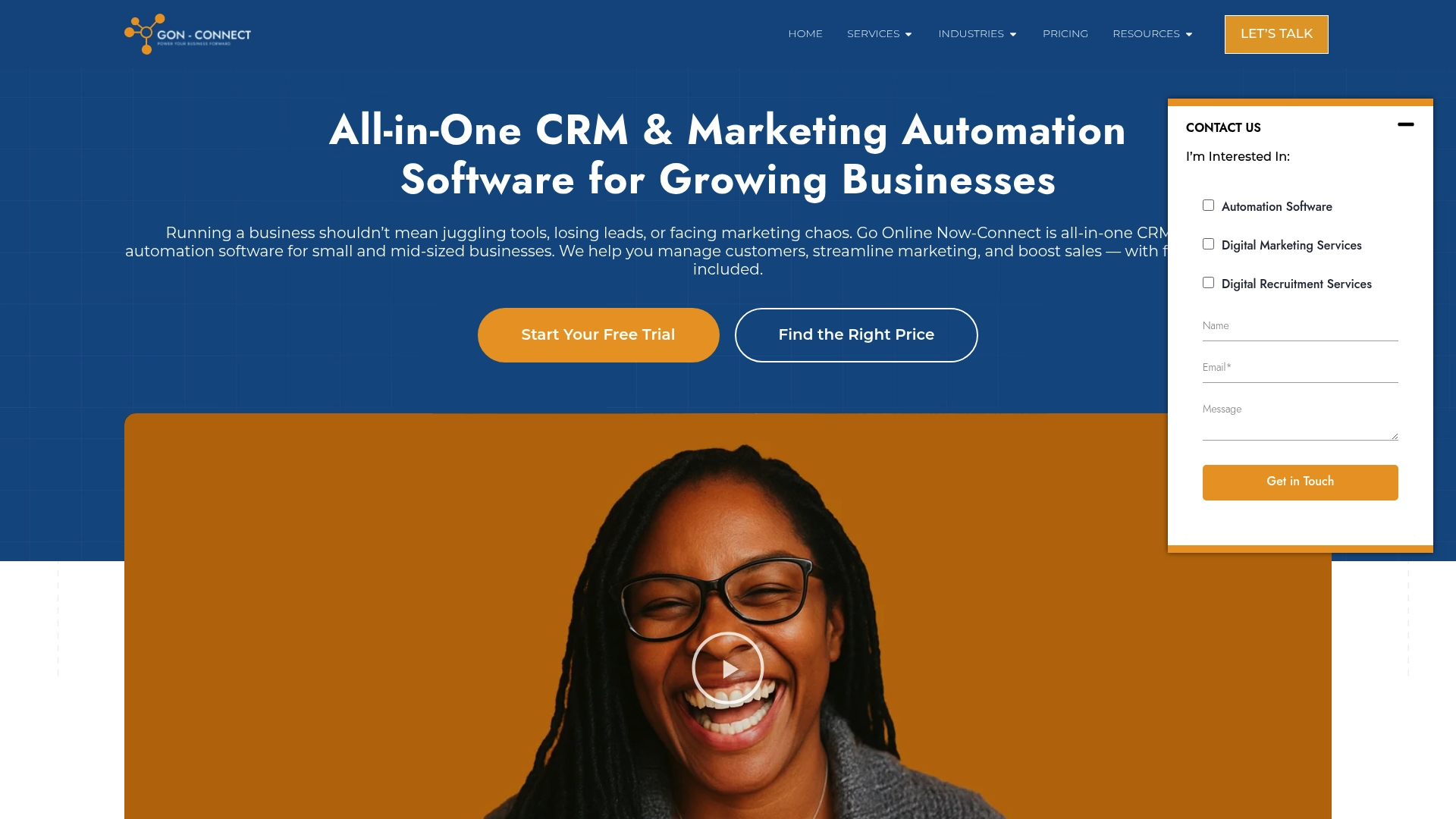Over 60 percent of small businesses struggle to see real results from their digital marketing. Deciding exactly who you want to reach and how you define success often makes the difference between wasted effort and lasting growth. By clarifying your business goals, choosing the right automation tools, and tracking your results, you will set the foundation for digital marketing that actually drives sales and builds loyal customers.
Step 1: Define business goals and target audience
In this crucial step, you will map out the strategic foundation for your digital marketing journey by clearly defining your business objectives and understanding exactly who your ideal customers are. Think of this as creating a precise roadmap that will guide every marketing decision you make.
Volgens Wikipedia, a target audience represents the “intended group of consumers for a specific message or product.” Identifying your target audience means diving deep into understanding their demographics, interests, and behaviors. Start by asking yourself some fundamental questions: What specific problem does my business solve? Who benefits most from my product or service?
Break down your target audience research into clear segments. Wikipedia’s market segmentation guide suggests dividing your potential customers based on shared characteristics like age, income, location, purchasing habits, and personal preferences. Create detailed customer personas that go beyond basic demographics. For instance, instead of just saying “women aged 25-40,” develop a more nuanced profile like “career-driven professional women in urban areas who value time-saving digital solutions.”
Pro tip: Don’t try to appeal to everyone. The most successful marketing strategies are laser-focused on a well-defined audience. By narrowing your focus, you’ll create more compelling and targeted messaging that resonates deeply with the right potential customers.
Once you’ve defined your business goals and target audience, you’re ready to move forward with crafting a digital marketing strategy that speaks directly to the people most likely to become your customers.
Step 2: Set up marketing automation and CRM tools
In this critical step, you will integrate powerful digital tools that transform how your business manages customer relationships and marketing processes. Think of this as building the technological backbone that will streamline your operations and supercharge your customer engagement.
Onderzoek van Ajates Scholarly highlights the significant potential of Marketing Technology (MarTech) stacks for SMEs, emphasizing how integrated CRM systems and marketing automation platforms can dramatically enhance operational efficiency. When selecting your tools, focus on solutions that offer seamless integration and user friendly interfaces. Look for platforms that can handle multiple functions like email marketing, contact management, lead tracking, and performance analytics.
Start by mapping out your specific business needs. What repetitive tasks can you automate? Which customer touchpoints require consistent follow up? Choose a CRM and marketing automation tool that allows you to create personalized workflows, segment your audience, and track customer interactions across different channels. Platforms that offer visual workflow builders and intuitive dashboards will help you quickly set up complex automation sequences without needing advanced technical skills.
Pro tip: Always prioritize tools with robust integration capabilities. The best marketing automation and CRM solutions should communicate with each other effortlessly, creating a unified view of your customer journey.
Once your tools are set up, you are ready to design targeted marketing campaigns that work smarter not harder.

Step 3: Launch integrated digital marketing campaigns
In this crucial step, you will create a cohesive digital marketing strategy that amplifies your brand message across multiple channels and maximizes your business’s online impact. Your goal is to develop a synchronized approach that connects with your target audience through strategic, intentional communication.
According to research from MDPI, digital marketing strategies significantly influence SME performance, particularly through integrated online advertising and social media marketing. Begin by mapping out a comprehensive campaign that leverages different digital platforms. This means creating content that maintains consistent messaging while adapting to the unique characteristics of each channel. For instance, your LinkedIn posts might be more professional and detailed, while Instagram content could be more visual and engaging.
De ArXiv research emphasizes the importance of developing organizational competencies for digital transformation. This translates to being strategic and intentional about your campaign. Start by establishing clear campaign objectives specific to each platform. Will you drive website traffic? Generate leads? Build brand awareness? Create tailored content and calls to action that align with these specific goals.
Pro tip: Track and measure your campaign performance across all channels. Use analytics tools to understand which platforms and content types deliver the best results, and be prepared to pivot your strategy based on real data.
With your integrated digital marketing campaigns launched, you are now ready to monitor, optimize, and refine your approach for maximum business growth.
Step 4: Track performance and optimize results
In this critical stage, you will transform raw data into actionable insights that drive continuous improvement for your digital marketing strategy. Your goal is to become a data driven decision maker who can quickly adapt and refine your marketing approaches based on real performance metrics.
Research from Ajates Scholarly emphasizes the crucial role of CRM systems in tracking customer interactions and leveraging data analytics to optimize marketing strategies. Start by identifying the key performance indicators (KPIs) most relevant to your business objectives. These might include conversion rates, customer acquisition cost, engagement metrics, and return on ad spend. Set up comprehensive dashboards that provide a holistic view of your marketing performance across different channels.
De ArXiv research suggests using advanced analytics techniques to approximate customer lifetime value and optimize marketing actions. Implement a systematic approach to performance tracking. Review your analytics weekly or monthly, looking for patterns and trends. Pay attention to which campaigns are delivering the best results and which might need adjustment. Use A/B testing to experiment with different messaging, visuals, and targeting strategies.
Pro tip: Don’t just collect data collect insights. Look beyond surface level metrics and dig deeper into what the numbers are telling you about your customers behavior and your marketing effectiveness.
With a robust performance tracking system in place, you are now equipped to continuously refine and improve your digital marketing strategy for maximum business growth.
Step 5: Verify improvements and adjust future efforts
In this final stage, you will transform your marketing data into a strategic roadmap for continuous growth and improvement. Your objective is to critically evaluate your digital marketing performance and create a dynamic plan that evolves with your business needs.
According to research from MDPI, digital transformation requires ongoing assessment and moderation of marketing strategies to achieve optimal organizational outcomes. Start by conducting a comprehensive review of your marketing initiatives. Compare your current performance metrics against your initial benchmarks and goals. Look for clear indicators of progress such as increased conversion rates, improved customer engagement, reduced customer acquisition costs, and enhanced overall marketing efficiency.
The ArXiv research emphasizes building organizational competence through continuous evaluation and adaptation of digital marketing strategies. Create a structured feedback loop where you regularly reassess and realign your marketing approach. This means not just looking at what worked but understanding why it worked. Analyze the specific tactics, messaging, targeting, and channels that delivered the best results. Then use these insights to refine your future marketing efforts.
Pro tip: Treat your marketing strategy as a living document. Be willing to experiment, learn, and pivot quickly. The most successful businesses are those that can adapt their strategies based on real world performance data.
With a clear understanding of your marketing improvements and a roadmap for future optimization, you are now positioned to drive sustainable growth for your business.
![]()
Elevate Your Digital Marketing Strategy with the Right Tools
Struggling with fragmented marketing efforts and complex tech setups is a common pain point for SMEs aiming to boost results fast. This digital marketing checklist highlights the crucial need for streamlined marketing automation and CRM integration to save time and drive better conversions. If your goal is to define clear business objectives, automate repetitive tasks, and run integrated campaigns that deliver measurable growth, then you need a simple yet powerful solution designed with your challenges in mind.

Ontdek hoe Ga nu online - Maak verbinding can transform your digital marketing efforts with an all-in-one marketing automation software built specifically for SMBs and SMEs. Our platform combines easy-to-use marketing automation, lead management, and CRM tools with expert digital marketing services to help you work smarter, not harder. Start your journey to higher conversions and greater efficiency today by exploring our Digitale marketingarchieven and see why thousands of businesses trust us to grow faster. Don’t wait to make your marketing simpler and more effective. Visit Go Online Now now and get started with done-for-you setup and real human support that puts your growth first.
Veelgestelde vragen
How do I define my business goals for digital marketing?
To define your business goals, start by identifying what you want to achieve—such as increasing sales or improving brand awareness. Write down 2-3 specific, measurable objectives that align with your overall mission and that you can track progress on over the next 6-12 months.
What steps should I take to identify my target audience?
Begin by researching the demographics, interests, and behaviors of potential customers who would benefit from your product or service. Create customer personas based on these insights, focusing on 2-3 segments that represent your ideal customers to tailor your marketing strategies effectively.
How can I set up marketing automation for my SME?
To set up marketing automation, first evaluate what repetitive tasks can be automated, like email marketing and lead tracking. Choose a user-friendly marketing automation platform and map out simple workflows that can be implemented within a week to streamline your operations.
What should I include in my integrated digital marketing campaign?
Your integrated campaign should include a mix of channels such as social media, email, and content marketing, all reinforcing your brand message. Plan specific content for each platform and prepare to launch these campaigns within 30 days to start measuring their impact.
How can I track the performance of my digital marketing efforts?
Identify key performance indicators (KPIs) relevant to your goals, such as conversion rates or customer engagement metrics. Set up a dashboard for weekly monitoring, and make it a routine to analyze these metrics to adapt your strategies every month.
What actions should I take after reviewing my marketing performance?
After reviewing your marketing performance, create a structured plan to adjust your strategies based on key insights. Focus on maintaining a feedback loop to continuously evaluate results and aim to implement changes within the next quarter for optimal growth.
Aanbevolen
- Understanding Digital Marketing Strategies for SMEs – Go Online Now
- 10 Digital Marketing Tips for SMBs to Boost Growth – Go Online Now
- Complete Guide to SME Digital Marketing Basics – Go Online Now
- Understanding Why Digital Marketing for SMBs Matters – Go Online Now
- Rôle Du Web Dans La Croissance D’Entreprise : Guide Complet – IT-Pascaud
- Weboldal szerepe a marketingben: Teljes útmutató Veszprémben – netomate

